










Collapsible content
You can play Kilter with 2-4 players, ages 8 and up.
Kilter is a great introduction to Physics. As different-sized blocks are placed on opposing sides of the seesaw, players see how the weight and placement of the blocks affect the seesaw’s balance.
Kilter also helps with Fine Motor Skills as players place blocks with a steady hand to avoid knocking any off the seesaw. Stack block high and wide (even a bit off the edge!) to make the game more challenging for your opponents.
• Place the seesaw in the center of the play area so that all players can reach it easily. Note that two of the arms will rest on the table and two of the arms will be in the air.
• Players receive the colored weighted blocks according to the number of players in the game. Consult the rules booklet for correct distribution.
• For a two-player game, give each player 4 red, 6 blue, 8 yellow, and 10 green blocks.
• For a three- or four-player game, give each player 3 red, 4 blue, 5 yellow, and 6 green blocks.
• Return any unused blocks to the box.
Stack as many blocks as you can on one of the raised arms of the seesaw. Position your blocks to make it tricky for your opponents but plan your moves carefully. If a raised arm lowers to the table, your turn is over, and if any blocks fall off, they’re all yours. The first player to place all their blocks on the seesaw wins!
On your turn, choose one of the raised arms to place your blocks on. For the duration of that turn you may only place blocks on your selected arm, and blocks must be placed one at a time.
Blocks may be placed anywhere on the chosen raised arm, even stacked on top of each other, but they may not be stacked on the center of the seesaw, where the four arms intersect each other.
You may not touch or move the seesaw. Only the block you are placing can touch the seesaw. You may not adjust any existing blocks, and after your block touches the seesaw, it may not be moved or rearranged in any way.
After placing at least one block, you may choose to end your turn at any time. However, if any blocks fall off the seesaw or if any of the raised arms of the seesaw lower and touch the table, your turn is over.
Collect any blocks that have fallen off the seesaw and add them to your pile.
Now it’s the next player’s turn.
The first player to place all their blocks on the seesaw wins!
For a more challenging game, all six spaces on one of the seesaw’s arms should be occupied by at least one block before players can start to stack blocks on top of one another. All other rules remain the same.
Learn about levers while going head-to-head with your opponents and the laws of physics with Kilter!

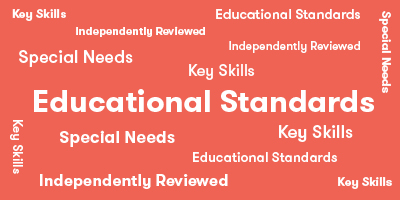
Core Standard*: Math, Science
Math
- Mathematical Practice
- Make sense of problems and persevere in solving them. Grade Levels 3rd, 4th, 5th
- Look for and make use of structure. Grade Levels 3rd, 4th, 5th
Science
- Inquiry – Making Observations
- Students learn that scientific investigations involve trying to answer questions by making observations or trying things out, rather than just asking an adult. Children are naturally curious about nearly everything—butterflies and clouds, and why the Moon seems to follow them at night. The essence of this standard is to channel students’ natural curiosity about the world, so that they become better questioners, observers, and thinkers, laying the groundwork for increasing understanding and abilities in science inquiry in the years to come. Grade Levels K, 1st
- Application – Solving Problems
- In earlier grades, students learned to use simple tools and materials to solve problems in creative ways. In grades 2-3 students develop the ability to design a solution to a simple problem, using an elementary version of the technological design process. They also increase their abilities to use tools and materials to design and build something that solves a problem. Students can apply these abilities in their daily lives. Grade Levels 2nd, 3rd
- Physical Science – Force and Motion
- Push-Pull and Position
- Students learn how to describe the position and motion of objects and the effects of forces on objects. Students start by describing the position of one object with respect to another object (e.g., in front, behind, above, and below) and then describe motion as a change in position. Forces are introduced as pushes and pulls that can change the motion of objects, and students learn through observation that various forces act through contact while others act from a distance (without touching the object). These basic concepts about forces and motion provide a foundation for learning to quantify motion in later years. Grade Levels K and 1st
- Force Makes Things Move
- In prior grades students learned to use appropriate words to describe the position and motion of objects and the effects of forces on objects. In grades 2-3 students learn that forces work not only to push and pull objects, but also affect objects when they are dropped or thrown. Whenever the motion of an object changes, there is a force involved. Greater forces on a given object result in greater changes of motion. In addition to being able to describe how forces change the motion of objects, students are expected to measure the position of objects using measuring instruments such as rulers. Students can also measure time to the nearest minute. Emphasis should be on comparisons of forces and motions rather than on calculation so that students develop conceptual understanding of how forces make things move. Grade Levels 2nd and 3rd

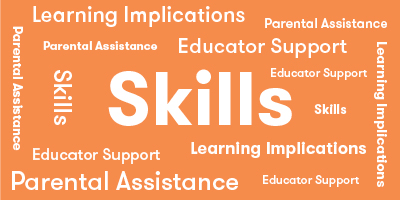
Explore
What Does Child Do To Use Skill In The Game?
Players explore weight value of the blocks, consequences of placing blocks, and spaces available on the seesaw.
How Parents Can Assist Learning
Exploration is a fundamental learning process, and this game is particularly good at helping children learn to examine carefully. Parents can encourage children to explore the cubes and varying placements on the lever arms prior to playing the game. This will help them learn about the different results of placing cubes in various locations.
Learning Implications and Educator Support
Picky Sticks helps children develop spatial reasoning skills and think about inter-relationship among parts, i.e. how one actions can result in unexpected consequence. Many fine motor activities, including construction and puzzle solving. require this type of study.
Educators can encourage children to explore the cubes and varying placements on the lever arms prior to playing the game. This will help them learn about the different results of placing cubes in various locations.
Determine
What Does Child Do To Use Skill In The Game?
Players will determine what to play next based on what is on the seesaw.
How Parents Can Assist Learning
Prompt children to remember what happened on prior moves (ex: did blocks slide, did any blocks fall so there is an open space, are the spaces available close to the center, etc.) to help them decide what is best option for their move. Also, parents can verbalize their own strategy, so children can learn by hearing what others think and then observe the consequences.
Learning Implications and Educator Support
Strategy games or activities like Kilter requires anticipation of consequences, which in turn requires analysis of the specific aspects of the situation. Prompt children to remember what happened on prior moves (ex: did blocks slide, did any blocks fall so there is an open space, are the spaces available close to the center, etc.) to help them decide what is best option for their move. Also, adults can verbalize their own strategy, so children can learn by hearing what others think and then observe the consequences.
Compare
What Does Child Do To Use Skill In The Game?
Players compare size and weight of blocks prior to putting them on the seesaw. They also compare the consequences after cubes are placed on the seesaw.
How Parents Can Assist Learning
For younger players, parents may need to remind them that small blocks weigh less and therefore are less likely to make the seesaw tip. They can ask children questions to encourage them to make comparisons, such as, "Which of the blocks is the lightest? Which is heaviest?" or, "Look at what is on this arm. How is it different than this one?"
Learning Implications and Educator Support
Comparing in Kilter helps children learn situational analysis because they need to consider and compare the consequences of playing a certain block in a certain location.For younger players, educators may need to remind them that small blocks weigh less and therefore are less likely to make the seesaw tip. They can ask children questions to encourage them to make comparisons, such as, "Which of the blocks is the lightest? Which is heaviest?" or, "Look at what is on this arm. How is it different than this one?"
Verbalizing is a good technique for strengthening the child's analytical abilities and problem-solving.
Remember
What Does Child Do To Use Skill In The Game?
Players must remember what worked and didn't work from previous turns. Example, stacking 4 green blocks may slide off of each other.
How Parents Can Assist Learning
Ask children to recall what just happened in the prior move. Also, ask them to identify if the current situation on the seesaw reminds them of any situations in the past. If so, what do they remember, and can it help them make a better choice for their turn?
Learning Implications and Educator Support
Ask children to recall what just happened in the prior move. Also, ask them to identify if the current situation on the seesaw reminds them of any situations in the past. If so, what do they remember, and can it help them make a better choice for their turn?
Predict
What Does Child Do To Use Skill In The Game?
Players are predicting with each turn whether adding block will cause others to fall or the seesaw to tip.
How Parents Can Assist Learning
Ask children to predict what will happen if s/he places a block. After they place, discuss what happened. Discussing consequences help children learn what worked and did not work, which in turn helps them make better predictions in the future.
Learning Implications and Educator Support
Playing Kilter helps children develop spatial reasoning skills, situational analysis, risk assessment and perspective changing, all skills that can be used to make more accurate predictions of opponents' moves. Additionally, making predictions requires analysis, observation, empathy and interpretation.
Ask children to predict what will happen if s/he places a block. After they place, discuss what happened. Discussing consequences help children learn what worked and did not work, which in turn helps them make better predictions in the future.
Plan
What Does Child Do To Use Skill In The Game?
Players think about their overall strategy, such as start with large blocks and then add small blocks. They also plan which blocks to use and when to stop placing blocks on each turn.
How Parents Can Assist Learning
Encourage younger players to think carefully before they place a block on the seesaw. Adults can encourage all children to think about having a strategy for future turns. You can say, "Be careful. Remember, if I don't make it fall on my turn, you have the next turn. Plan ahead."
Learning Implications and Educator Support
Planning is an important skill for developing strategic thinking, persistence and reaching a goal. Encourage younger players to think carefully before they place a block on the seesaw. Educators can encourage all children to think about having a strategy for future turns. You can say, "Be careful. Remember, if I don't make it fall on my turn, you have the next turn. Plan ahead."
Additionally, being able to hypothesize risk and reward consequences of actions help children develop strategic thinking. Educators can support children by having them look at their remaining blocks and thinking about what order they want to play those blocks in order to win the game. Encourage the children to arrange their blocks in order of anticipated play.
Experiment
What Does Child Do To Use Skill In The Game?
Experimentation is integral to Kilter, as each turn provides an opportunity for a player to think about and try different blocks in different locations prior to making a move.
How Parents Can Assist Learning
Kilter is good for experimenting with strategy and tactics. Discuss different strategies, such as stacking blocks versus playing blocks in a single level, prior to starting the game and encourage the child to select one. Play the game and discuss. Then, play again with the child trying a different strategy. Discuss again and compare the advantages and disadvantages.
Learning Implications and Educator Support
Kilter is good for experimenting with strategy and tactics. Discuss different strategies, such as stacking blocks versus playing blocks in a single level, prior to starting the game and encourage the child to select one. Play the game and discuss. Then, play again with the child trying a different strategy. Discuss again and compare the advantages and disadvantages.
Practice
What Does Child Do To Use Skill In The Game?
This game allows players to practice their skills in balancing the seesaw while they play the game. The more you play, the better you'll be at this this game.
How Parents Can Assist Learning
No specific parental support required. Adults can encourage children to play solo, stacking as many blocks on the seesaw with any falling off. This will allow them to practice without calling it "practice".
Learning Implications and Educator Support
Practice is needed to learn any skill. Educators can reinforce the child's increasing fine motor and perception skills, such as for identifying places to place a yellow or blue block. This is a game that can be left as part of a classroom play center, such as in the science or construction area.
Solve
What Does Child Do To Use Skill In The Game?
As players place blocks, they are gathering information about when the seesaw may tip or blocks might fall. Based on this, players decide where and when to place blocks, and when to voluntarily stop placing blocks.
How Parents Can Assist Learning
Parents can help children think about a strategy to begin the game, such as place all the red blocks first. However, as the game progresses, new information is being learned all the time which directly effects how players approach placing or not placing blocks on their turn, keeping in mind their overall strategy for how to win the game. The ability to shift strategies based on new information can help children cope with the stresses of change in other areas of their life.
Learning Implications and Educator Support
Kilter involves uses of visual spatial problem solving and if/then problem solving. As children master the fine motor skills required to play Kilter, they learn new information constantly during game play as blocks are played, move around and even fall off the Seesaw. This information directly effects how children strategize an approach for placing their own blocks, including when to stop a turn voluntarily, and ultimately solve the game.
Review
What Does Child Do To Use Skill In The Game?
Children may review if encouraged. See How Parents Can Assist Learning.
How Parents Can Assist Learning
During game play, when a child makes a particularly good move, stop and review what they did that made the move successful.
Learning Implications and Educator Support
Kilter involves uses of visual spatial problem solving and if/then problem solving. During game play, when a child makes a particularly good move, stop and review what they did that made the move successful.
*Data compiled from CCSSI ELA Standards, WA Science Standards, and Washington Social Studies Standards

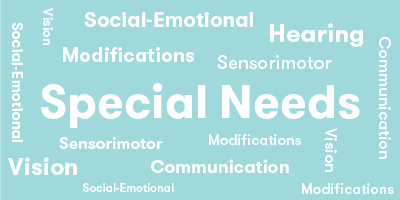
Cognitive
Suggestions for How to Modify Play Experience
For children with cognitive delays, use one color at a time, starting with red. When this color is depleted, move to blue, etc. This reduces the choices players need to make.
Children with cognitive delays can practice building structures with the various sized blocks on a solid surface such as a table. The seesaw can be incorporated into the structures, if desired. This adds an element of challenge, as children need to make decisions about size and placement. Action figures can be added to make dramatic play scenarios.
Communication
Suggestions for How to Modify Play Experience
To encourage children to communicate, ask children to narrate what they are doing. "I'm putting the small green block on top of the red. I hope it is light enough."
Play in pairs. Place all of the cubes in a bag. Each child of the pair draws a block from the bag and decides where they would place the block they drew. The players then compare their choices and decide together which one to play. Both blocks can be used if desired. Any unused block is returned to the bag. This modification requires children to discuss choices.
Sensorimotor
Suggestions for How to Modify Play Experience
Not recommended for children with fine motor concerns
Social Emotional/Behavioral
Suggestions for How to Modify Play Experience
Play in pairs. Place all of the cubes in a bag. Each child of the pair draws a block from the bag and decides where they would place the block they drew. The players then compare their choices and decide together which one to play. Both blocks can be used if desired. Any unused block is returned to the bag. This modification requires children to negotiate an approach on their turn.
Vision
Suggestions for How to Modify Play Experience
This game is not recommended for children with vision impairments. They may be able to see the colors (if the have low vision), but they will not be able to clearly see placement options.
Have children with low vision experiment with feeling the blocks and trying to combine into a tower. Give the child four of each block in pile. Have children with low vision experiment with feeling the blocks and trying to combine four largest cubes making a square. This is the first floor. Then, ask child to find the next size of cubes and combine them into a square on top of the first floor. And so on. The child uses feel to guide the building of the structure, compare the block sizes, and stack them.
Hearing
Suggestions for How to Modify Play Experience
Children with hearing impairments should be able to play the game with modeling, gestures, and signs to provide directions for the game.
*Data compiled from CCSSI ELA Standards, WA Science Standards, and Washington Social Studies Standards

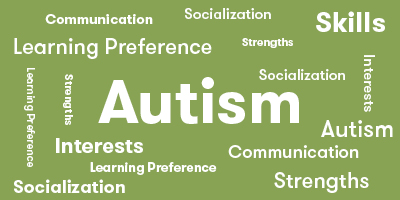
Autism Strengths & Interests
Short Summary of Strengths & Interests
- Enjoys and is good at playing with blocks.
- Likes exploring balance.
- Learn while visualizing the possible effects of actions.
Is good at matching visual items
This game is not appropriate
Has a good memory for sensory details, including visual, touch, taste and smell
Is This Game Appropriate? Yes
Description
Children who have good balance awareness and fine motor skills will enjoy Kilter. Players must carefully place blocks to avoid knocking any off and to avoid tipping the Seesaw. Doing this well draws on a child's sensory memory of pressure, balance and touch.
Has a good memory for words, phrases and dialouge
This game is not appropriate
Has a good memory for pictures, numbers and patterns
This game is not appropriate
Likes to put things in order or a sequence
This game is not appropriate
Learns through visualizing or "replaying" actions in their mind
Is This Game Appropriate? Yes
Description
Children who are good at visualizing the effects of a possible action will be able to use that skill in Kilter. On each turn, players need to consider what might happen if they place a block on a certain spot. Additionally, children who can mentally replay previous actions will be able to modify their play based on what they remember of cause-and-effect actions performed by themselves and others.
Likes activities with rules, such as math and phonics
This game is not appropriate
Is very concrete and literal
Is This Game Appropriate? Yes
Description
Kilter requires players to stack small blocks of different sizes and colors on a balancing arm in an attempt to place all of their blocks on the Seesaw. Therefore, children who like to manipulate real objects will enjoy Kilter. Also, Kilter does not require any symbolic or abstract thinking, so it appeals to children who prefer to be literal
Learns in small "chunks" (for example, phone numbers are 3 chunks of number xxx-xxx-xxxx that are combined together)
Is This Game Appropriate? Yes
Description
Players who learn from previous experiences can also use trial-and-error as a basis for incrementally learning principles of gravity and balance. For example, if a player experiences placing a large block on small block as consistently resulting in the large block falling or sliding, the player can combine that "chunk" of information with the memory of the results of other block placements in order to maximize their turn.
Is good at nonverbal reasoning and logic
Is This Game Appropriate? Yes
Description
Children who do not like to or are not able to communicate well are able to benefit from Kilter, because they can show their nonverbal reasoning skills, i.e. placing their blocks on the Seesaw successfully, without having to talk to other players.
Likes spatial problem solving
Is This Game Appropriate? Yes
Description
If children enjoy spatial reasoning and problem solving, and are spatially astute, they will be able to use those strengths in Kilter. These strengths are needed because players must understand the relationship of the sizes and weights of the different colored blocks, and be able to predict what will happen when a specific block is positioned on an arm or on top of another block.
Can read well with good vocabulary, though may not fully comprehend content
This game is not appropriate
Likes to use and has good fine motor skill
Is This Game Appropriate? Yes
Description
This game requires fine motor skills as the players must carefully place blocks to avoid knocking any off. If children like building with blocks and trying to balance objects or doing other precise fine motor activities, they will be very good at Kilter.
Likes established routines or set ways of doing things
This game is not appropriate
Likes manipulating, constructing or building things
Is This Game Appropriate? Yes
Description
Kilter requires players to stack small blocks of different sizes and colors on a balancing arm in an attempt to place all of their blocks on the Seesaw. Children who like to manipulate real objects and construct with blocks will like this game.
Likes to use and has good musical abilities
This game is not appropriate
Likes to use and has good drawing skills
This game is not appropriate
Autism Special Considerations
Appears to ignore other's communication and/or has difficulty giving eye contact to a communication partner
Is This Game Appropriate for Child with Characteristic? Yes
Can Child with Characteristic Play Game w/o Modification? Yes
Strategies for Developing Compensatory Skills:
Look at the game instead of each other.
Use unusual or exaggerated inflection to begin a communication about the game. This attracts the child's attention.
Has difficulty understanding complex verbal directions
Is This Game Appropriate for Child with Characteristic? Yes
Can Child with Characteristic Play Game w/o Modification? Yes
Strategies for Developing Compensatory Skills:
Break down directions into small steps. Don't go through all the directions at once.
Combine short verbal instructions with visual and physical examples of each step.
Use hand-over hand guidance if needed, so children feel the actions as the directions are being given. This helps develop the child's memory for the correct movements. Gradually reduce the support as the game is learned.
Check for comprehension by asking the child to show you what to do next.
Let children read the directions as they are explained. Visualizing the words is often a stronger learning method for children with autism.
Uses vocabulary inaccurately or demonstrates echolalia (repeating another's speech)
Is This Game Appropriate for Child with Characteristic? Yes
Can Child with Characteristic Play Game w/o Modification? Yes
Strategies for Developing Compensatory Skills:
Respond to immediate echolalia (repeating what was just said) by rephrasing the child's response into a correct format, so the child can hear and repeat that phrase. For example, assume you are playing with a child named Andy and you say, "Your turn," and Andy repeats, "Your turn." You can say, "It's Andy's turn. You say, my turn." This allows the child to hear and repeat the correct response. Eventually, the child will pick up the pattern of response.
Delayed echolalia (repetition of previously heard comments) may have a hidden meaning or association. Look for connection in the phrase used to the current situation. For example, the child says, "After these messages we'll be right back!" Think what the repeated phrase is associated with for the child. Try to interpret what is meant and rephrase it for the child. For example, you might respond by saying, "It sounds like you want a break for a few minutes. Is that what you mean? You can tell me, 'I need a break.'"
Gets stuck repeating a verbal topic or physical actions and/or has difficulty attending to others' actions or topic.
Is This Game Appropriate for Child with Characteristic? Yes
Can Child with Characteristic Play Game w/o Modification? Yes
Strategies for Developing Compensatory Skills:
Incorporate a preferred topic into the game to increase motivation. For example, if the child is fixated on a particular character, like a favorite super hero, ask what the character would do if they were playing?
Practice phrases for commenting on others' play actions. For example, you say to Joe (who is playing with you), "Good move! You quit before it fell ." Then ask the child, "What did Joe do? "
Remind children about listening and watching others' before making their own comment or action.
Practice turn-taking in conversation. Use a cue, such as a touch on the shoulder, if needed.
Reinforce attention and actions by commenting on what was done correctly. For example, "You were slow and careful!"
Has difficulty producing speech/communication
Is This Game Appropriate for Child with Characteristic? Yes
Can Child with Characteristic Play Game w/o Modification? Yes
Strategies for Developing Compensatory Skills:
Use augmentative communication, such as picture cards. For example, a picture of person pointing to another person means "your turn."
Communication is not required to play.
Has difficulty sequencing multi-step actions and/or doing complex abstract tasks
Is This Game Appropriate for Child with Characteristic? No
Can Child with Characteristic Play Game w/o Modification? No
Strategies for Developing Compensatory Skills:
Kilter requires thinking about cause and effect of actions and comparing space and weight. These are abstract tasks and may be too challenging for children who have difficulty thinking about multiple variables at one time.
Demonstrates difficulty initiating and maintaining social interactions
Is This Game Appropriate for Child with Characteristic? Yes
Can Child with Characteristic Play Game w/o Modification? Yes
Strategies for Developing Compensatory Skills:
Develop a social story to be read at the start of a game. A social story is a short booklet that illustrates how a child can use positive social skills. It includes two to five descriptive statements and a directive statement. For example: "When I watch others, I will know when it is my turn. Others like me when I take turns. I will watch what others do with their pieces and listen to what they say. Others like it when I talk about the game." Add photos or drawings of the child doing the actions described in the story.
Role play social situations and reinforce appropriate words and actions. For example, role play commenting on another player's turn. For instance, "Wow! You stacked 4 blocks."
Use video feedback of positive social behaviors. Video of actual play enables children to see what they or others did. Appropriate actions and interactions can then be discussed.
Acts out or demonstrates avoidance behaviors when frustrated, overwhelmed, or needs more sensory input.
Is This Game Appropriate for Child with Characteristic? Yes
Can Child with Characteristic Play Game w/o Modification? No
Strategies for Developing Compensatory Skills:
Reduce extraneous noise or allow the child to wear head phones or ear plugs if loud sounds cause anxiety.
A weighted vest worn during the game may provide additional pressure input and thus reduce fidgeting due to sensory needs. Pressure can be calming when used for no more than 20 minutes at a time.
Practice a phrase to ask for help and role play situations in the game where it is needed.
Provide techniques for self-calming, such as holding a special toy.
Allow time for movement. For example, a child who needs to move frequently can be given an opportunity to 'celebrate' their turn by running around the table or jumping up and down 10 times.
Has short attention span for non-preferred activities
Is This Game Appropriate for Child with Characteristic? No
Can Child with Characteristic Play Game w/o Modification? No
Strategies for Developing Compensatory Skills:
Not recommended for children with a short attention span. The game requires concentration.
Needs sameness or consistent routines and/or has difficulty with transitions from one activity to another
Is This Game Appropriate for Child with Characteristic? Yes
Can Child with Characteristic Play Game w/o Modification? Yes
Strategies for Developing Compensatory Skills:
Play games at the same time every day, so the child anticipates the game routine.
Change the location of the game, so the child may play in different rooms, at the table, or on the floor. This will build tolerance for variation.
Prepare the child ahead time for the introduction of a new game. Talk about aspects that will be motivating for the child, and let them explore the parts of the game before setting out the whole game.
Provide a structure for placement of game pieces that can be the same each time the game is played. For example, have a specific location for where the board goes, the pieces, etc.
Provide choices for how the child can be involved in set up or clean up. For example, you might ask, "Do you want to hand out the red or yellow cubes?" Involve the child verbally and with actions for the transition to the game table or at the end of game play. For example, you might say, "Let's look at the pictures on the game box and guess what it is about."
Use an object cue. Let the child hold an object from the game or activity you want to introduce prior to the transition. For example, if you were intending to play Kilter, you would hand the child a colored block from the game and say, "Look here is a colored block. Let's find the game it goes in."
Has difficulty understanding others' feelings, intentions, and the reasons for others' actions.
Is This Game Appropriate for Child with Characteristic? Yes
Can Child with Characteristic Play Game w/o Modification? Yes
Strategies for Developing Compensatory Skills:
Model and point out what others are feeling and comment on their facial expressions or words.
Discuss what causes feelings in others. For example, "You are happy because your block did not fall. But, look at Joe's face. He is sad because five blocks fell off." Ask child to explain their own feelings and intentions.
*Data compiled from CCSSI ELA Standards, WA Science Standards, and Washington Social Studies Standards

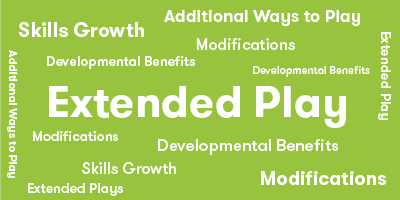
Extra Ways to Play the Game
This is a 2-person "Teeter-Totter" version. The players should sit directly opposite each other. Set up the seesaw so an arm faces each player. Player 1 places four red blocks anywhere on the arm facing them. Player 2 places as many blocks as possible on their arm until the seesaw tips. Count the total number of blocks and that is the player's score. Players switch roles. Player 2 must set up the red blocks in the same pattern as player one. Player 1 then adds blocks on their side of the arm. The player with the most blocks wins that round. A variant of this game is that after every thirty seconds, player one can remove one of the red blocks. This makes the second player have to work very quickly to get as many blocks stacked as possible before a block is removed.
Materials Needed
No additional materials are needed.
Developmental Benefits
The goal of this game is not to get rid of all of your cubes, but just to balance the larger number. Children do not feel the pressure of each turn, but rather just the final count. In the first variation players must think carefully. In the timed version, speed becomes an element, so working quickly is balanced against thinking carefully.
Extra Ways to Play the Game
Players must play colors in order from large to small or small to large, as decided by group. Play proceeds as in the regular game otherwise. Players need to mark where they left off after a turn, so they are sure to start with the next color on their next turn.
Materials Needed
No additional materials are needed.
Developmental Benefits
The challenge in this variation is that players do not have an option as to what size to play next. This makes the player consider the weight and placement of the blocks more carefully.
Extra Ways to Play the Game
Play the game the same way only each player can build on both arms elevated arms with their turn. This provides additional options for cube placement.
Materials Needed
No additional materials are needed.
Developmental Benefits
Giving children an additional arm to build on provides one more variable to make the game a little more complex. Children can move from placing a cube on one arm to placing one on another. This may also provide longer play time for each turn before an arm falls.
*Data compiled from CCSSI ELA Standards, WA Science Standards, and Washington Social Studies Standards
- Choosing a selection results in a full page refresh.
- Opens in a new window.














